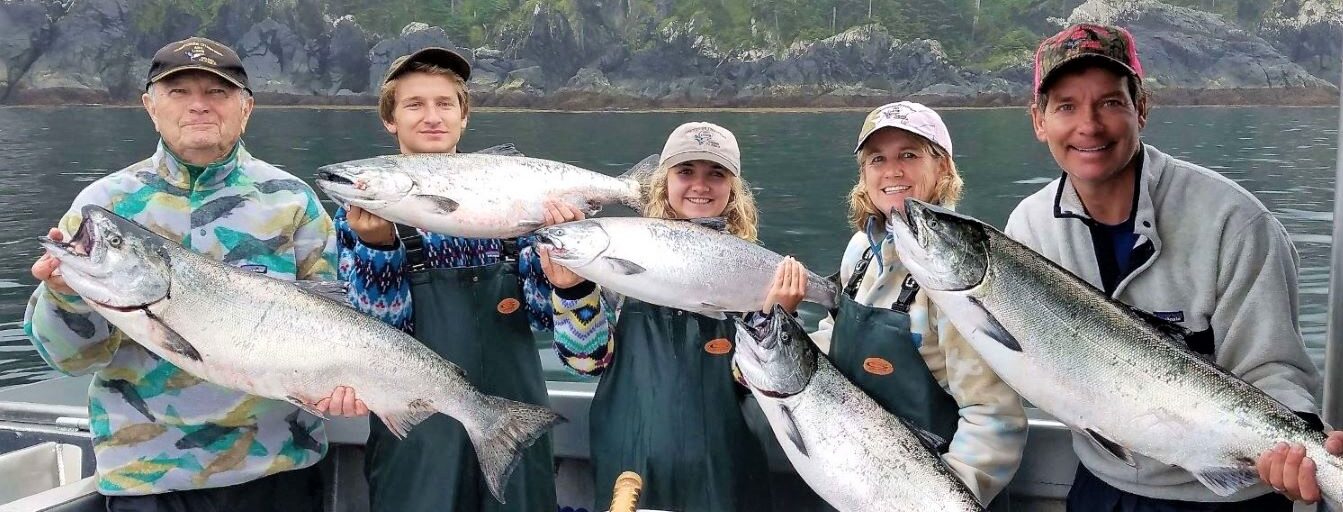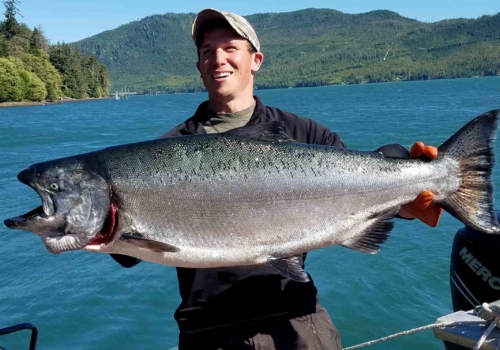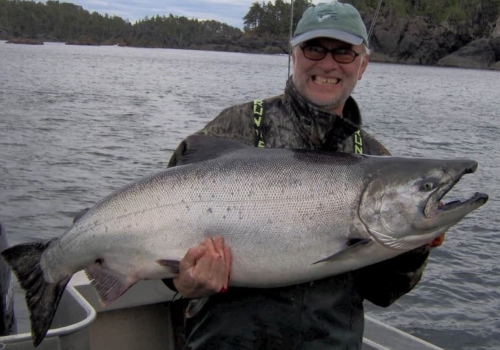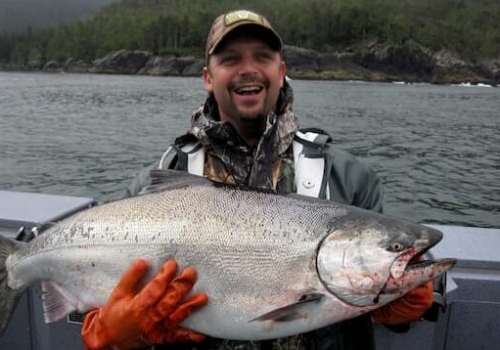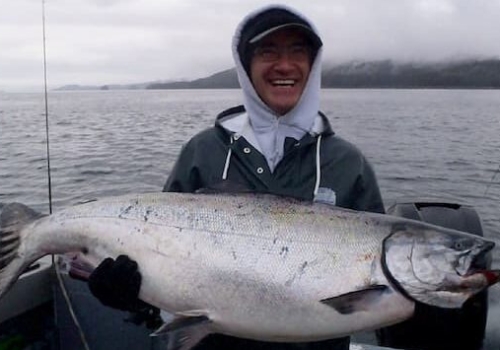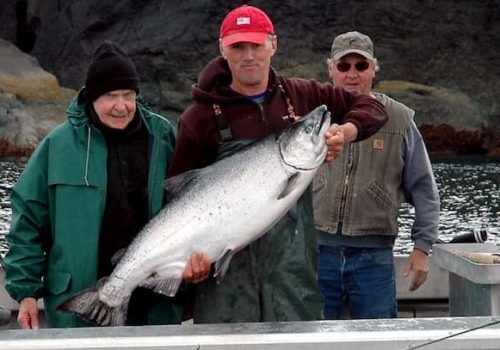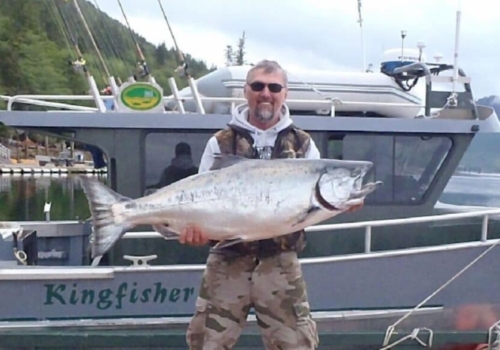King Salmon

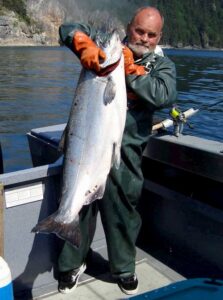
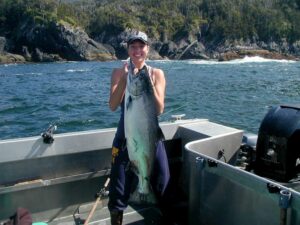
Mooching for King Salmon
The vast majority of the salmon caught around Prince of Wales Island by Craig Charter fleet every summer are taken mooching. Alaska fishing guides attach 6 foot leaders rigged with double hooks in either 3/0-4/0 or 4/0-5/0 are attached to a 4 to 6 ounce banana weight, and with the boat moving forward slightly, these rigs are then dropped by the angler at a controlled rate off the charter boat until they reach the bottom, or a predetermined cutoff depth. At that point the reel is kicked into gear and the herring is reeled slowly through a determined water column generally near the bottom one third of depth. After working this area in an up down effect for a short time, the bait should be checked; it is not unusual for salmon to bite when the bait nears the surface so a person should be prepared for that bite further up near the surface as well.
Alaska King and Coho salmon can be feeding at virtually any depth, thus the mooching method is a great way to cover the entire water column and is very enjoyable to hook and land your own fish. “Feeling the bite is the best part of the whole experience in my opinion because many times you miss the bite, so getting the hooks into those incredibly crafty fish is a great experience.”
Fishing success is in the details, so we want to give our customers the “how to” information they will need to have a fun and successful Alaska salmon fishing adventure. Check out our latest article on ‘Mooching Salmon Instructions’ – Click Here
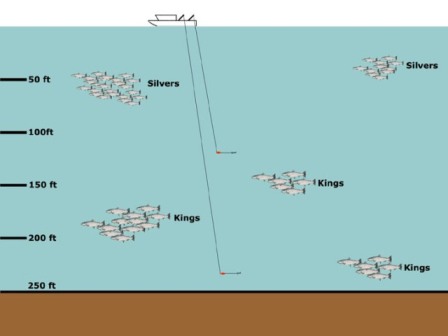
If there were a slightly more productive time to catch a trophy Alaska king salmon it would likely be from the last week of June thru the end of July when the large Skeena strain of kings are moving thru. Craig Alaska charter fleet as well as Alaska residents catch trophy class kings throughout May, June, July, and into early and sometimes into late August. Working the kelp lines and structure with a well-spun cut plug herring can put you face to face with a slab king any day of the week from early May till mid August. Bait, structure, and currents draw large fish to these areas each and every year, and fish in the 50’s, 60’s, and even 70’s are taken from this productive Prince of Wales Island area on a yearly basis. Trophy kings are certainly caught elsewhere, but the majority of the Alaskan anglers and Craig Alaska charter captains searching for a wall hanger king salmon fish the Noyes, and Baker Islands, off Prince of Wales Island.
Weather fishing for a trophy class king salmon or your average 20 pound king hooks need to be sharp, bait fresh, line and leaders free of frays, and rods and reels need to be in top working order. There’s nothing like hooking up with one of these explosive wonders, this is, after all, the big league of king salmon fishing.
Reproduction
King salmon may spend between one to nine years in the ocean before returning to their home rivers to spawn, though the average is three to four years. King salmon prefer larger and deeper water to spawn in than other species of salmon and can be found on the spawning nests or (redd) from September through to December. After the female lays her eggs in a redd, adult female king will guard the redd from 4 to 25 days before dying, while males look for other females to spawn with.
King salmon eggs will hatch, depending upon water temperatures, 90 to 150 days after deposition. Eggs are deposited at a time to ensure that young salmon fry emerge during appropriate time for juvenile survival and growth. Fry and parr (young fish) usually stay in freshwater from twelve to eighteen months before travelling downstream to estuaries, where they remain as smolts for several months. They also turn a bright red before spawning. They spawn in main channels in order to hide from predators.
Range of King Salmon
Chinook salmon range from San Francisco Bay in California to north of the Bering Strait in Alaska, and the arctic waters of Canada and Russia including the entire Pacific coast in between. Populations occur in Asia as far south as the islands of Japan. Chinook salmon have also established itself in the waters of the Patagonia in South America, where escaped hatchery fish have colonized rivers and established stable spawning runs. The species was introduced into New Zealand waters at beginning of the twentieth century, and it has flourished while other salmon were introduced into New Zealand, only Chinook (or Quinnat as it is known locally in NZ) has established important pelagic runs.
The Yukon River has the longest freshwater migration route of any salmon, over 3,000 kilometers from its mouth in the Bering Sea to spawning grounds upstream of Whitehorse, Yukon.
